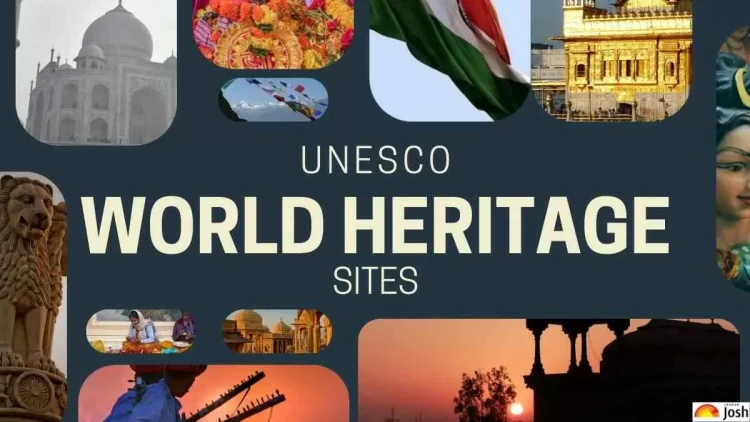The World Heritage Committee inscribed 26 additional properties on the World Heritage List at its 47th session, which took place at UNESCO Headquarters in Paris, France, from July 6–16, 2025. Along with considering new nominations, the Committee also discussed the effects of climate change on heritage, examined the management and conservation of existing sites, and authorised the extension of two existing sites to establish new transboundary natural parks.
The session reaffirmed efforts to preserve African heritage, recognised the increasing acknowledgement of remembering sites and the protection of humanity’s shared prehistory, and prioritised the involvement of local communities in safeguarding policies, according to UNESCO. These 26 properties, which are spread across 26 nations, are currently protected to the highest standards by international heritage organisations.
An establishment’s inclusion on the UNESCO World Heritage List is an acknowledgement of its “Outstanding Universal Value.” Its extraordinary cultural and/or natural significance, which cuts across national borders and is considered important to all of humanity, is intended to be highlighted by this classification. New nominations to the List are reviewed annually by the World Heritage Committee, which is made up of members from 21 of the 196 States Parties. The Committee administers the World Heritage Fund, carries out the World Heritage Convention, and provides financial support upon request from States Parties. Although a site’s income is not guaranteed by acknowledgement, it may lead to more financing opportunities.
The Committee also determines whether to add or remove properties from the List of World Heritage in Danger, reviews conservation reports, and proposes remedial action where needed. Nomination submissions are only accepted from States Parties to the Convention that are dedicated to preserving their natural and cultural assets. These 26 additional inscriptions bring the total number of sites on the UNESCO World Heritage List to 1,248 in 170 countries, including 972 cultural, 235 natural, and 41 combined properties. With the removal of three sites in Madagascar, Egypt, and Libya from the List of World history in Danger and the addition of four additional sites—all submitted by local communities with the backing of national authorities—the 47th session brought attention to African history. A site that spans South Africa and Mozambique was also accepted by the Committee, resulting in the creation of a transboundary natural park that is almost 4,000 km² in size.
As part of its focused assistance to African Member States, UNESCO has funded safeguarding programs and trained local experts to draft nominations. Africa now has 112 sites that have been inscribed with these latest additions. Seven other African states are anticipated to submit their first nominations by 2027, with Guinea-Bissau and Sierra Leone doing so this year.
Along with receiving worldwide recognition, these inscriptions aim to preserve the living and spiritual traditions that are inextricably linked to these locations and emphasise the crucial role that local communities play in preserving and promoting heritage. The properties on the List could have mixed, cultural, or natural value. Four natural sites are included in this year’s inscriptions: the Gola-Tiwai Complex in Sierra Leone, Møns Klint in Denmark, the Peruaçu River Canyon in Brazil, and the Coastal and Marine Ecosystems of the Bijagós Archipelago – Omatí Minhô in Guinea-Bissau. North Korea’s Mount Kumgang and Diamond Mountain are listed as mixed properties from the sea. Below is a comprehensive list of recently inscribed properties:
- Cambodian Memorial Sites: From centres of repression to places of peace and reflection (Cambodia)
- Coastal and Marine Ecosystems of the Bijagós Archipelago – Omatí Minhô (Guinea-Bissau)
- Cultural Heritage Sites of Ancient Khuttal (Tajikistan)
- Diy-Gid-Biy Cultural Landscape of the Mandara Mountains (Cameroon)
- Faya Palaeolandscape (United Arab Emirates)
- Forest Research Institute Malaysia Forest Park Selangor (Malaysia)
- Funerary Tradition in the Prehistory of Sardinia – The domus de janas (Italy)
- Gola-Tiwai Complex (Sierra Leone)
- Maratha Military Landscapes of India (India)
- Megaliths of Carnac and of the shores of Morbihan (France)
- Minoan Palatial Centres (Greece)
- Mount Kumgang – Diamond Mountain from the Sea (Democratic People’s Republic of Korea)
- Mount Mulanje Cultural Landscape (Malawi)
- Møns Klint (Denmark)
- Murujuga Cultural Landscape (Australia)
- Peruaçu River Canyon (Brazil)
- Petroglyphs along the Bangucheon Stream (Republic of Korea)
- Prehistoric Sites of the Khorramabad Valley (Iran Islamic Republic of)
- Rock Paintings of Shulgan-Tash Cave (Russian Federation)
- Sardis and the Lydian Tumuli of Bin Tepe (Türkiye)
- The Archaeological Ensemble of 17th Century Port Royal (Jamaica)
- The Colonial Transisthmian Route of Panamá (Panama)
- The Palaces of King Ludwig II of Bavaria: Neuschwanstein, Linderhof, Schachen and Herrenchiemsee (Germany)
- Wixárika Route through Sacred Sites to Wirikuta (Tatehuarí Huajuyé) (Mexico)
- Xixia Imperial Tombs (China)
- Yen Tu-Vinh Nghiem-Con Son, Kiep Bac Complex of Monuments and Landscapes (Viet Nam).
Image credit: Jagran Josh


















